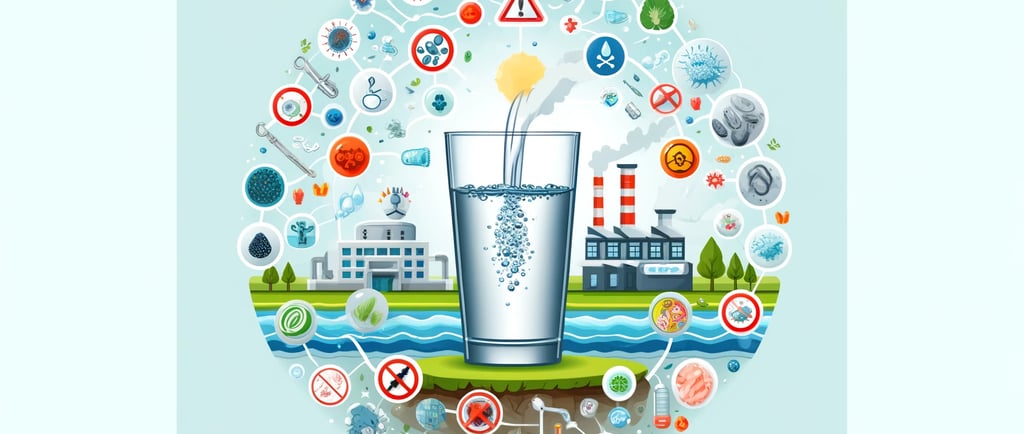How Bad Is Tap Water for Health?
Factors Affecting Tap Water Quality
HEALTH


How Bad Is Tap Water for Health?
Tap water is a common source of drinking water for millions of people around the world. While it is generally safe to drink in many areas, concerns about its safety and potential health risks often arise. This article explores the factors that affect tap water quality, potential contaminants, and the health implications of drinking tap water.
Factors Affecting Tap Water Quality
Source of Water: The origin of the water, whether it is from a river, lake, reservoir, or underground aquifer, can significantly influence its quality.
Treatment Processes: The processes used by water treatment facilities to purify water can vary, affecting the presence of contaminants.
Distribution System: The condition of pipes and infrastructure through which tap water is delivered can impact its quality.
Local Regulations: The stringency of water quality standards and enforcement by local authorities plays a crucial role in ensuring safe drinking water.
Common Contaminants in Tap Water
Microorganisms: Bacteria, viruses, and parasites can be present in water sources, potentially causing illnesses like gastrointestinal infections.
Chemical Contaminants: These can include pesticides, herbicides, industrial chemicals, and pharmaceuticals that enter water supplies through agricultural runoff, industrial discharges, and improper disposal.
Heavy Metals: Lead, arsenic, and mercury are examples of heavy metals that can leach into water from natural sources or aging infrastructure, posing significant health risks.
Chlorine and Chloramine: These disinfectants are used to kill harmful microorganisms but can form harmful byproducts when they react with organic matter in water.
Fluoride: While fluoride is added to water to prevent tooth decay, excessive levels can lead to dental fluorosis and other health issues.
Nitrates: Often from agricultural runoff, high levels of nitrates in drinking water can be harmful, especially to infants.
Health Implications of Contaminated Tap Water
Acute Health Effects: Contaminants like bacteria and viruses can cause immediate health problems, including stomach cramps, diarrhea, and vomiting.
Chronic Health Effects: Long-term exposure to certain contaminants, such as heavy metals and chemical pollutants, can lead to serious health conditions, including cancer, liver and kidney damage, and reproductive issues.
Developmental Issues: Children and infants are particularly vulnerable to contaminants like lead and nitrates, which can impair development and cognitive function.
Assessing Tap Water Safety
Water Quality Reports: Municipal water suppliers are required to provide annual water quality reports, also known as Consumer Confidence Reports (CCRs), which detail the contaminants found in the water and their levels.
Home Testing Kits: These kits can test for various contaminants and provide a snapshot of the water quality in your home.
Professional Testing: For a comprehensive assessment, consider hiring a professional service to test your tap water.
Reducing Risks from Tap Water
Use Water Filters: Different types of water filters, such as activated carbon, reverse osmosis, and distillation systems, can effectively remove many contaminants.
Boil Water: Boiling water can kill bacteria and viruses, making it safer to drink in cases of microbiological contamination.
Regular Maintenance: Ensure that home plumbing systems are regularly inspected and maintained to prevent lead and other contaminants from leaching into your water.
Stay Informed: Keep up-to-date with local water quality reports and advisories issued by health departments.
Conclusion
The safety of tap water varies depending on the source, treatment processes, and local regulations. While many areas have safe and clean tap water, others may face issues with contaminants that pose health risks. Staying informed about the quality of your tap water, using appropriate filtration methods, and following safety guidelines can help ensure that the water you drink is safe and healthy.



